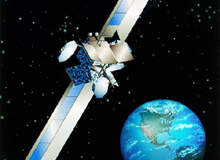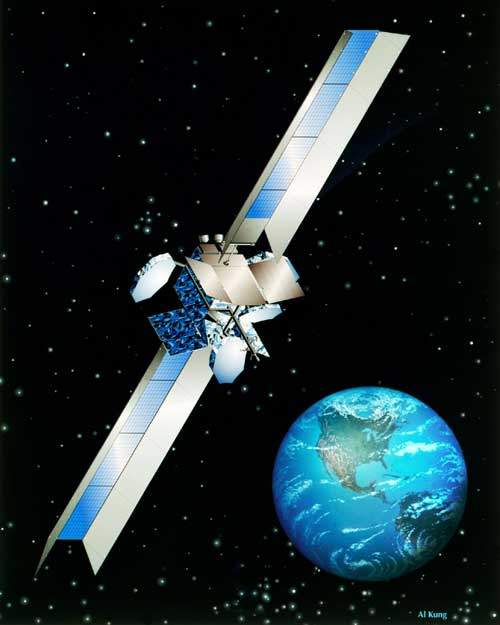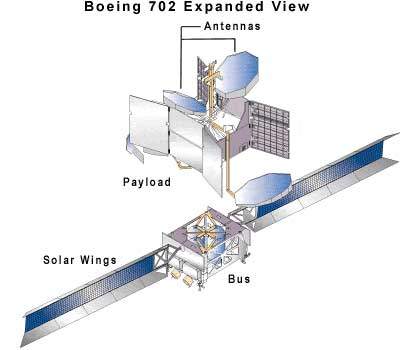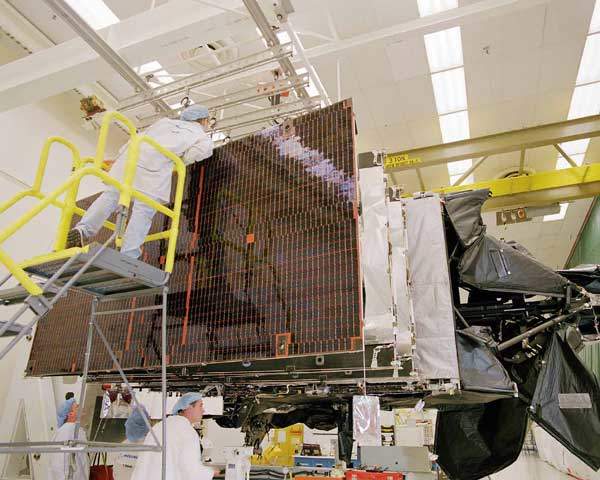In October 1995, Hughes Space and Communications, now Boeing Satellite Systems, announced a new satellite series, called the Hughes 702. Evolved from the proven Hughes 601 and 601HP (high power) spacecraft, the body-stabilised Hughes 702 is a giant in size, performance and cost efficiency. The satellites are now known as the Boeing 601, 601HP and 702.
Hughes Communications, which merged with PanAmSat Corporation in May 1997 to create the world’s largest privately owned communications satellite company, was the first customer for the new model. The Galaxy and PAS fleet chose the 702 satellite to expand their video distribution, telephony and data services in North and Latin American markets.
Boeing was awarded contract worth approximately $1bn for a system consisting of two 702HP satellites, in 1997. The first Boeing 702HP satellite was launched in 1999. The 702MP satellite was launched in the market in 2009.
Boeing received a second major contract from SkyTerra for two 702HP satellites, including an option for a third, in 2006.
In December 2010, the Government of Mexico placed an order for two 702HP (high power) geo-mobile satellites. The first satellite was completed in January 2014 followed by the second in June 2014. Intelsat placed an order for four 702MP satellites in May 2013.
As of June 2014, the delivered and launched Boeing 702 spacecraft models included the Anik F1; Anik F2; DirecTV 10-11-12; Galaxy IIIC; Galaxy XI; NSS-8; PAS-1R; SPACEWAY 1, 2; SPACEWAY 3; XM-1, 2; XM-3, 4; IS-22; IS-21; IS-27; Imarsat-5 F1; Centenario; and Morelos-3. Out of these the NSS-8, which was launched by SES NEW SKIES in 2007, was destroyed due to a booster failure, and IS-27 was lost in January 2013 due to launch failure.
In March 2010, Boeing Space & intelligence systems announced that it will market 702 satellites by two different names: Boeing 702HP for the high-power version and 702MP for Medium-power version.
Major customers included Telesat Canada, DirecTV, PanAmSat, SES NEW SKIES, XM Satellite Radio, Intelsat, Inmarsat, and ViaSat.
Transponders
The Boeing 702 can carry up to 118 high-power transponders (94 active and 24 spares), and is capable of delivering any communications frequencies required.
Modularity
A broad spectrum of modularity (the payload / bus integration, for example) makes the Boeing 702 deliver improved customer value and productivity while lowering the cost.
The payload module mounts to the common bus module at just four locations with six electrical connectors, after the payload is being tailored to customer specifications. Such design simplicity offers major cost advantage as non-recurring programme costs are reduced since the bus need not be changed for every payload, and payloads can be freely tailored without the bus being affected. Furthermore, the simpler design significantly speeds up bus and payload processing simultaneously.
The cost and speed advantages lead to a short production schedule, which is the third major advantage with the satellite series.
XIPS propulsion system
The advanced xenon ion propulsion system (XIPS), pioneered by Hughes, added further efficiency to the new Boeing 702 satellite. When compared to conventional liquid fuel systems, XIPS has been claimed to be ten times more efficient. The four, 25cm thrusters in the satellite need less fuel than bipropellant or arcjet systems consume, thus promoting economical station-keeping.
Since more mass is conserved by using the XIPS system, compared to that of an on-board liquid apogee engine, the weight savings can be applied to prolong service life, or to increase the revenue generating payload at small marginal cost, or to shift to a less-expensive launch vehicle in cases where satellite mass is critical to the cost.
Further, the bipropellant propulsion, which helps to lift the satellite into final orbit after separation from the launch vehicle, added more versatility to the Boeing 702
Solar power system
An innovative feature on the Boeing 702 is its solar power system, which consists of angled solar reflector panels along both sides of the wings. Together, the panels form a shallow trough and concentrate the sun rays on the solar cells that power the satellite.
Dual and triple-junction gallium arsenide solar cells developed by Spectrolab, a subsidiary of Boeing, offer a range of power up to 25kW in the ‘Plus’ version of the Boeing 702.
Thermal environment
By separating the bus and payload thermal environments and substantially enlarging the heat radiators, a cooler, more stable thermal environment for both bus and payload have been achieved in the Boeing 702. Due to this, the unit reliability over service life could be increased.
Flexible heat pipes used in the satellite’s deployable radiators increase the packageable radiator area, while passive primary rejection via heat pipes enables further thermal control in the satellite.
Other satellites
The baseline Boeing 702 is compatible with already-launched, as well as soon-to-be-available launch vehicles, including the Atlas V family, Delta IV, Ariane 4 and 5, Proton and Sea Launch.







